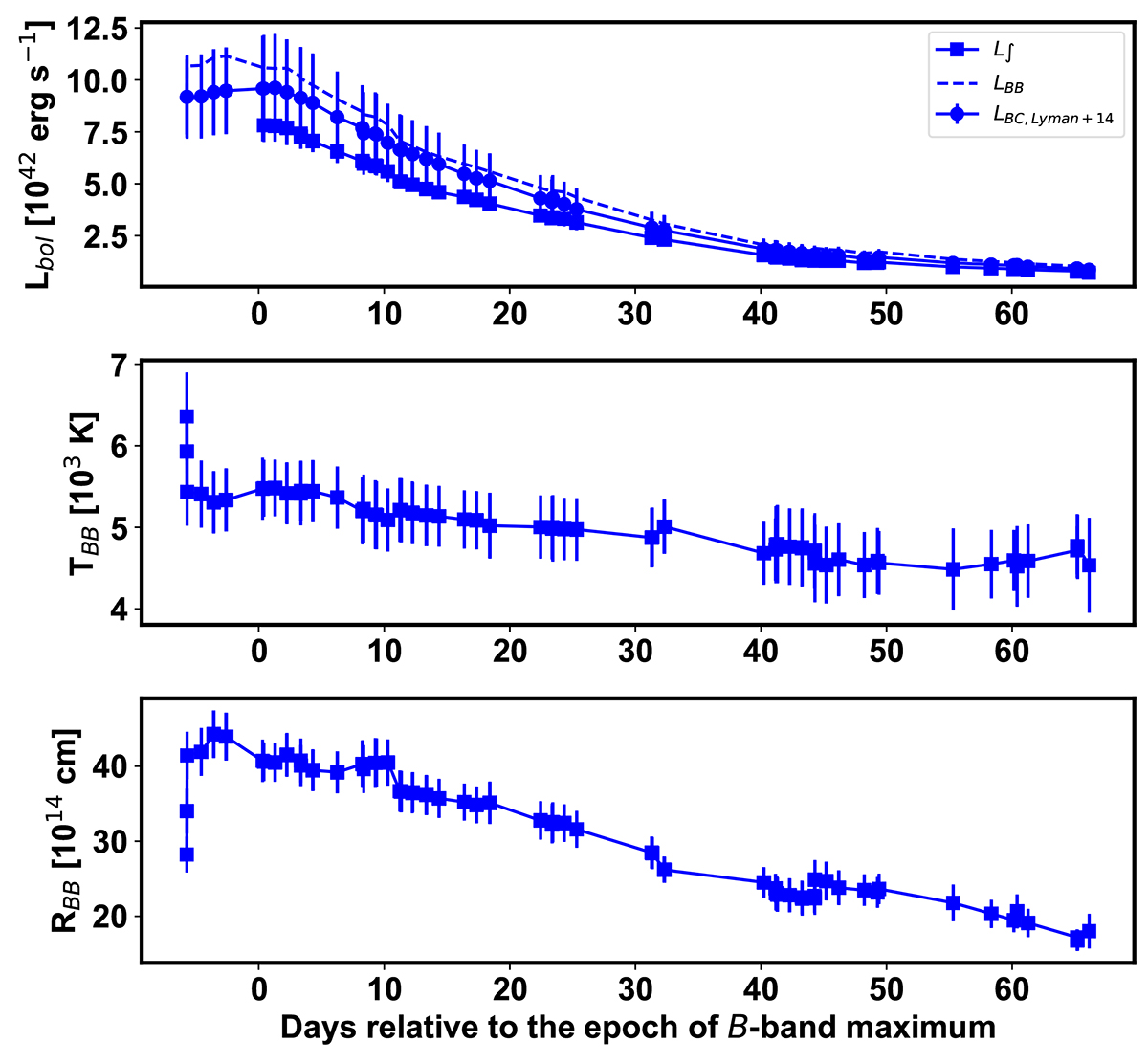Fig. 13.

Download original image
Bolometric light curves (top), black-body temperature profile (middle), and black-body radius profile (bottom) of SN 2016adj. Using broadband photometry corrected for both Milky Way and host-galaxy reddening, bolometric light curves were computed by: (i) integrating the best-fit Planck function to the SEDs (dashed line denoted by LBB), (ii) trapezoidal integration of the SEDs (filled squares denoted by L∫) and (iii) through the combination of the g- and i-band photometry combined with the bolometric corrections presented by Lyman et al. (2014, filled circles denoted LBC, Lyman). We adopted our best host-reddening estimate, that is, a FTZ99 reddening law with ![]() = 5.7 ± 0.7 and
= 5.7 ± 0.7 and ![]() mag. The uncertainties reported for RBB and TBB correspond to the BB fit errors, while those of LBC, Lyman account for the uncertainties of the adopted reddening and distance to Centaurus A.
mag. The uncertainties reported for RBB and TBB correspond to the BB fit errors, while those of LBC, Lyman account for the uncertainties of the adopted reddening and distance to Centaurus A.
Current usage metrics show cumulative count of Article Views (full-text article views including HTML views, PDF and ePub downloads, according to the available data) and Abstracts Views on Vision4Press platform.
Data correspond to usage on the plateform after 2015. The current usage metrics is available 48-96 hours after online publication and is updated daily on week days.
Initial download of the metrics may take a while.


